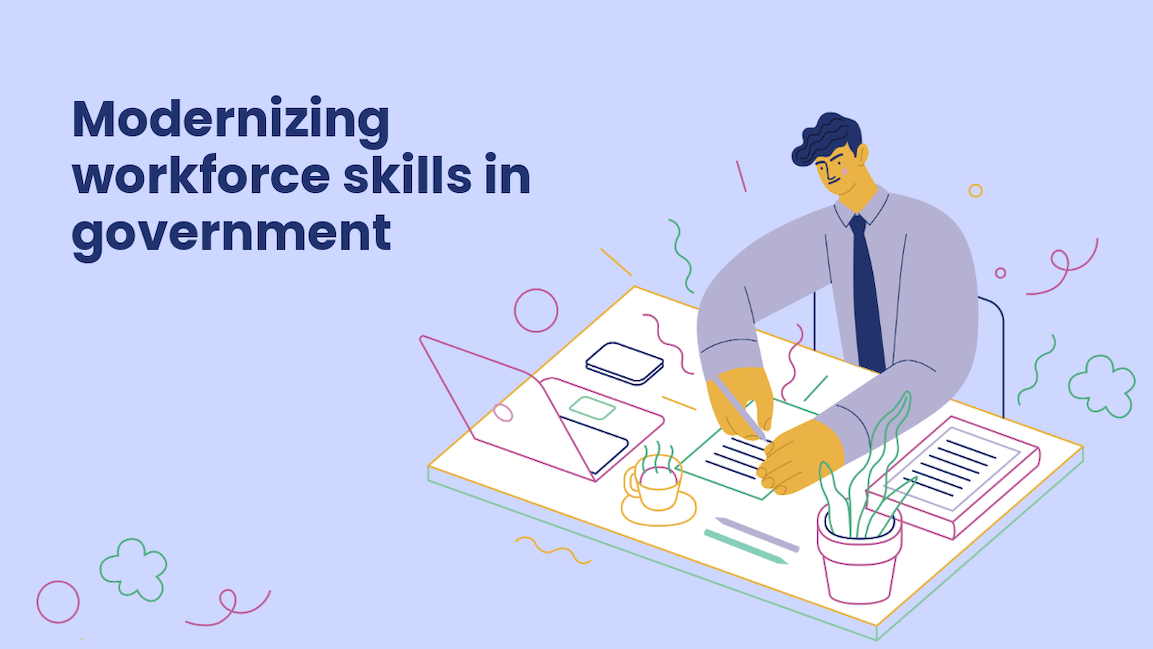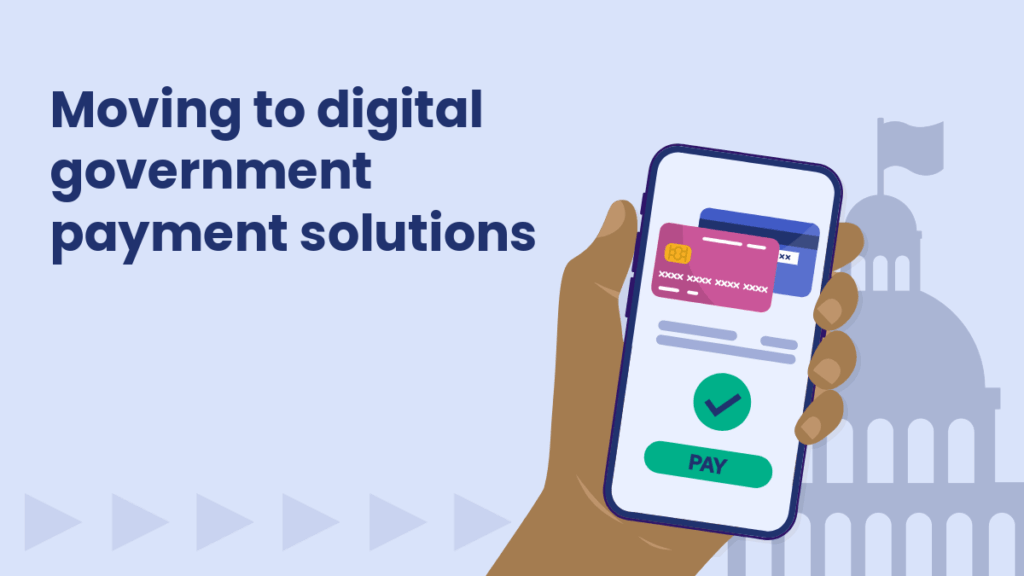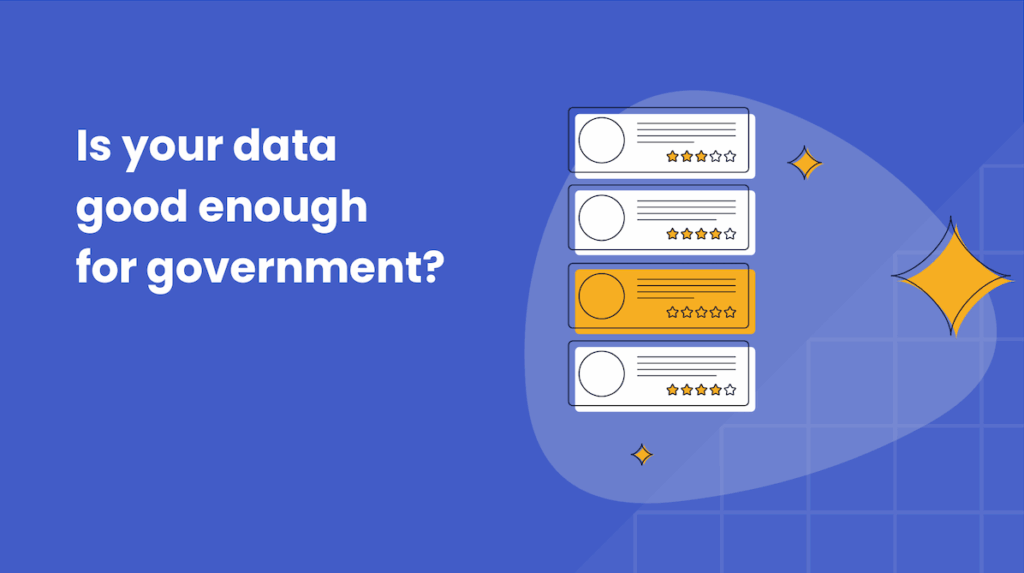Equipping public servants for the AI era: Upskilling staff with targeted training

Emerging technologies, especially generative AI, are rapidly reshaping public sector roles. As job requirements evolve, state and local governments face a pressing need to equip employees with new skills. Without targeted training, the skills gap could widen, limiting the public sector’s ability to deliver modern, responsive services.
In the NASCIO State of the States Tech Forecast 2025, AI workforce expertise and training were top concerns: 53% of state leaders cited a lack of necessary skills as challenges that could impact state GenAI adoption.
Government agencies are already taking action
With the changes in technology, nobody is sure exactly how jobs will look in the future, so trying to prepare and upskill staff is a daunting challenge. The World Economic Forum estimates that 50% of today’s global workforce needs to upskill or reskill to stay relevant. The good news? Many government agencies are taking steps to train staff. Here’s what’s working right now:
- Identifying skills shortages: Through internal audits and workforce assessments, agencies can pinpoint where the largest gaps lie
- Partnering with educational institutions and private sector leaders: Collaborations with universities and tech companies provide access to up-to-date information and expert training
- Creating support structures: Cohorts, mentorships, and career coaching help staff navigate transitions and stay engaged
Barriers to upskilling in government
- Legacy structure and culture: Complex regulations, budget constraints, public scrutiny, staff shortages, and lengthy contracting processes mean government agencies have generally been slower to adopt technology than the private sector. By necessity, tech adoption in the public sector is now moving faster, but without a supportive culture and training opportunities, workers can feel stressed and uncertain as their roles are transformed.
- Skills mismatch: GenAI is being implemented now, but many workers don’t feel totally confident that their skills match the moment. Public and private sectors alike are facing a huge challenge: How do we prepare workers for jobs that don’t yet exist?
- AI fatigue: Overexposure and rapid changes can be exhausting for staff. Ernst & Young recently reported that 50% of business leaders feel that employee enthusiasm for AI adoption is declining, and 65% admit they’re struggling to keep employees motivated to embrace new technology.
Real-world training strategies for a digital-first public sector workforce
Upskilling public sector workers helps agencies thrive and provide better government services and leads to improved employee performance and retention. Here are a few real-world examples to create a culture of learning:
- Digital playgrounds for training: The 2024 Deloitte Global Human Capital Trends report emphasizes the use of “digital playgrounds.” These simulated environments allow public sector employees to experiment with digital tools with minimal risk, fostering a culture of continuous learning and innovation.
- Cross-skilling initiatives: Pluralsight suggests cross-skilling, where technologists are trained in overlapping areas of expertise. This approach addresses data and AI skill gaps in the public sector, enabling a more adaptable and resilient workforce.
- AI user groups: States like Texas have created user groups to help crowd-source information. “In just a little over a year that we’ve done this, more than 700 state and local government employees have signed up, which speaks to the need. Folks share best practices, templates, policies, and those sorts of things,” said Amanda Crawford, State Chief Information Officer and Executive Director, DIR, State of Texas.
- Mentorship-based upskilling: California’s Public Workforce Development Program pairs senior employees with junior staff to facilitate knowledge transfer and technical skill-building, effectively closing skill gaps and improving team dynamics. The California Department of Tax and Fee Administration (CDTFA) Mentoring Program, for example, uses structured one-on-one relationships to enhance professional skills growth.
- State-wide training initiatives: In New York, the Office of Information Technology Services (ITS) is rolling out a training program to ensure the State workforce has access to training about how to responsibly use AI. Along with the training, ITS will provide a secure generative AI toolset for hands-on practice.
Connect training to the staff’s mission
With the future of work somewhat unclear, it’s important to tie upskilling and training to your agency’s purpose and mission. How can technology help with a specific task? Could an AI tool minimize time in one area that could be better used on a bigger project? Would it improve employee engagement or morale? Training programs gain traction when leaders show how new skills align with existing values: public service, transparency, and community impact.
Looking for more content?
Get articles and insights from our monthly newsletter.




